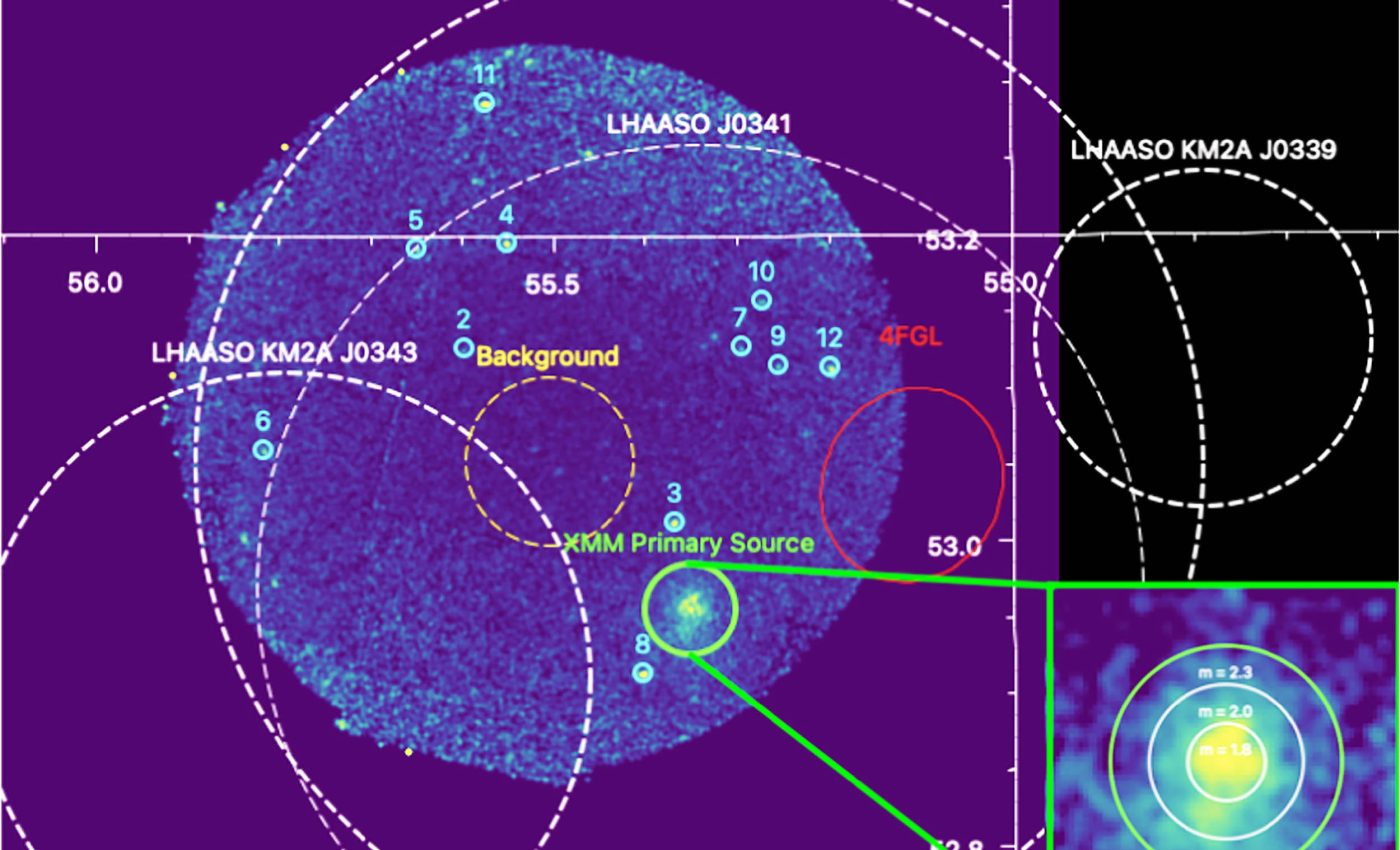
Astronomers think they have finally learned where cosmic rays come from
For decades, scientists have searched the cosmos for the source of mysterious streams of cosmic rays that zip through the universe at close to the speed of light.
These particles have been detected on our planet for more than a century, but their true birthplace remained unknown.
Experts have speculated that supernova remnants, black holes, or star forming regions might be the points of origin for these fast-moving visitors.
These theories have inched closer to confirmation after the analysis of a new X-ray source linked to these elusive particles.
Understanding cosmic rays – the basics
Galactic cosmic rays are high-energy particles that originate from sources within our Milky Way galaxy. They consist mostly of protons, along with a smaller fraction of heavier nuclei and electrons.
Once launched into space, these particles travel through the interstellar medium, colliding with atoms and magnetic fields along the way.
This chaotic journey scrambles their paths, making it difficult to trace them back to their original sources.
As these cosmic rays approach our solar system, they encounter the solar wind and the Sun’s magnetic field, which can deflect or slow them down.
Earth’s own magnetic field and atmosphere provide further shielding, protecting life from most of their harmful effects.
However, some of the more energetic particles still penetrate, creating showers of secondary particles when they strike atoms in the upper atmosphere.
Tracing the X-ray source of cosmic rays
Shuo Zhang and her colleagues at Michigan State University approached this mystery by using data from telescopes that capture different wavelengths of light.
The findings revealed an unusual pulsar wind nebula that could help pinpoint where certain high-energy rays emerge.
One part of the team’s investigation involved looking at emissions from the XMM-Newton space telescope.
The experts identified a glowing structure that suggests electrons and other small particles may be accelerating to speeds beyond anything created in labs on Earth.
Nebula may shoot out cosmic particles
The team’s X-ray observations revealed a nebula powered by a fast-spinning pulsar, surrounded by a bubble of high-energy electrons.
This structure, called a pulsar wind nebula, matches patterns seen in other known sources of ultra-energetic particles.
By analyzing the brightness and shape of the X-ray emissions, the researchers confirmed the nebula was asymmetrical, stretching more in one direction.
That uneven spread supports the idea that the pulsar is actively injecting energy into the surrounding space, flinging particles outward at extreme speeds.
Why neutrinos matter
“Cosmic rays are a lot more relevant to life on Earth than you might think. About 100 trillion cosmic neutrinos from far, far away sources like black holes pass through your body every second,” said Zhang.
Neutrinos carry almost no mass and ignore most barriers, so they arrive from deep space without losing much energy.
When researchers notice them at detectors on Earth, they can often be traced back to powerful astrophysical events that release both charged and uncharged particles.
Hidden cosmic ray source spotted
Zhang’s team published two papers that explored possible sources tied to these charged particles.
In one, the researchers analyzed X-ray data and confirmed that a hidden nebula is shaped by fast-spinning stellar leftovers, boosting particles to intense energy levels.

In the second paper, three undergraduate students used additional space telescope data to check other sources of cosmic rays.
Their calculations provided upper limits that direct future missions toward the most promising spots for learning more about high-speed cosmic collisions.
Cataloging cosmic ray origins
“Through identifying and classifying cosmic ray sources, our effort can hopefully provide a comprehensive catalog of cosmic ray sources with classification,” said Zhang.
“That could serve as a legacy for future neutrino observatory and traditional telescopes to perform more in-depth study in particle acceleration mechanisms.”
A catalog of cosmic-ray sources might improve our understanding of how different sources shape the Milky Way.
The data could also hint at whether certain galactic events contribute more particles than others, which tells us something about how matter behaves in extreme conditions.
Why this matters beyond astronomy
While this research may seem distant, the implications go far beyond star maps and telescopes.
Cosmic rays influence satellite technology, aviation safety, and even the behavior of electronics during solar storms.
Understanding their sources can also improve models of radiation exposure for astronauts and high-altitude flights.
As we plan future missions to the Moon, Mars, and beyond, knowing where high-energy particles come from is more than just curiosity, it’s a safety issue.
Training the next generation of scientists
This project didn’t just push forward cosmic ray science, it gave real-world experience to students. Undergraduate researchers helped analyze data from NASA’s Swift X-ray telescope, setting benchmarks for future investigations.
By involving students in front-line astrophysics work, Zhang’s team is helping grow a new wave of scientists equipped to tackle complex cosmic questions.
The research shows how academic labs can become launchpads for careers in space science and physics.
Confirming the sources of cosmic rays
“This work will call for collaboration between particle physicists and astronomers. It’s an ideal project for the MSU high-energy physics group,” said Zhang. She noted that multiple fields stand to gain from these insights.
The next plan involves combining more data from observatories like IceCube with X-ray and gamma-ray telescopes.
Such efforts may reveal why certain cosmic-ray sources also release neutrinos, while others focus on producing only fast protons and electrons.
The study is published in The Astrophysical Journal.
Image Credit: NASA-JPL-Caltech/ CXC/ SAO/ STScI
—–
Like what you read? Subscribe to our newsletter for engaging articles, exclusive content, and the latest updates.
Check us out on EarthSnap, a free app brought to you by Eric Ralls and Earth.com.
—–













